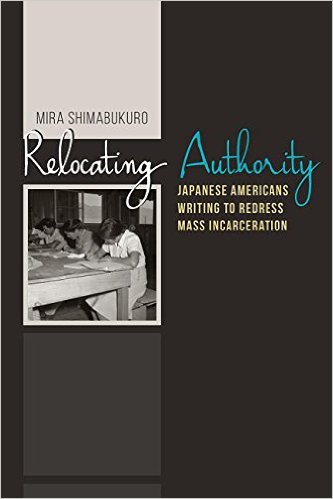
In his essay for a 1999 Mike Mackey-edited anthology, Remembering Heart Mountain, Lane Hirabayashi cautions Japanese American incarceration scholars not to over-generalize about Japanese American “resistance” to oppression within the War Relocation Authority-administered concentration camps. However, he then quickly subdues this prudent warning by declaring: “My reading of the archival record confirms, repeatedly … the frequency and tenacity of resistance on multiple occasions and multiple levels.” Four years earlier, in his edited volume of Richard Nishimoto’s writings pertaining to World War II resistance activity at the Poston detention camp in Arizona, Inside an American Concentration Camp, Hirabayashi explored, extended, and enriched the concept of “popular resistance to mass incarceration,” which Gary Okihiro had earlier pioneered relative to Japanese American studies via seminal articles in Amerasia Journal, (1973), Journal of Ethnic Studies (1977), and Phylon (1984). This backstory makes it very understandable and appropriate as to why the present book under review here, Mira Shimabukuro’s Relocating Authority, appears within Hirabayashi’s Nikkei in the Americas series for the University Press of Colorado.
Although this study is published by an academic press (albeit one atypically attentive to non-academic authors and audiences) and its intellectual scaffolding — particularly within its opening chapter, “Writing to Redress: Attending to Nikkei Literacies of Survivance” — is larded with scholarly terminology and source references, Shimabukuro succeeds admirably in rendering her theorizing user-friendly for a general readership by a combination of sparkling prose and irradiating examples. As for the author’s close-grained articulation of her very significant and often quite insightful argument, I have chosen here to jettison it as being beyond the scope of a brief review like this one, and instead to limit myself to summarizing and domesticating the main components, conclusions, and consequences of her erudite treatise.
Certainly the two key components of Shimabukuro’s book — and properly so — are encapsulated within its imaginatively strategic title, Relocating Authority, and subtitle, Japanese Americans Writing to Redress Mass Incarceration. In keeping with the recent terminological shift in Japanese American studies away from traditional euphemistic terms like “relocation” shrouding the harsh reality of the Nikkei World War II experience, Shimabukuro aims to transfer the authoritative voice for the defining nature of that experience from the U.S. government, the WRA, and the collaborative Japanese American Citizens League (JACL) leadership to the inmates within the assorted incarceration centers. Allied with this aim, Shimabukuro seeks interpretive answers through ferreting out and “attending” to heretofore largely buried or ignored written/verbal material (e.g., contemporary correspondence, notes, manifestos, and retrospective oral histories) emanating from the imprisoned population, with the intention of setting the record straight — that is, “redressing” — both their unconstitutional victimization and the terms of its rectification).
Among Shimabukuro’s conclusions, two that resonated powerfully with me are these: 1) that although the source material for supporting the “relocation of authority” sought can be found in university and other “official history” repositories, the more bountiful (and accessible) venues for facilitating this quest are community archives such as the comprehensive brick-and-mortar Hirasaki National Resource Center at the Japanese American National Museum (HNRC-JANM) in Los Angeles and the Seattle-based Densho online collection of oral histories, government records, photographs, encyclopedia entries, and course syllabi; and 2) Japanese American resistance to oppression, as Okihiro, Hirabayashi, and other Japanese American researchers have registered, was far more widespread and robust among their wartime prison denizens than it has been represented both by public media and word of mouth. In this connection, Shimabukuro offers her readers three instructive appendices, the March 1944 manifesto of the Heart Mountain Fair Play Committee as to its support of draft resistance, and two contrasting Minidoka concentration camp letters reacting to the impending draft of Nisei (the February 12, 1944 draft version penned by Minoru Yasui for the Mother’s Society of Minidoka, and the more pointed February 20, 1944 revised version authored by the Mother’s Society and mailed to U.S. President Franklin Roosevelt).
Respecting the consequences of Relocating Authority, the one I found most far-reaching was that the post-World War II unearthing and/or re-assessing of invisible or seemingly innocuous wartime resistance writings, although not figuring per se in redressing oppressive wrongs during the period of Nikkei incarceration, later served during the 1970s-1980s to fuel and fortify the collective community-based movement of Japanese Americans for redress, reparations, social justice and human dignity. As the daughter of redress activist Bob Shimabukuro, who authored the passionate book Born in Seattle on the Japanese American redress campaign, and the step-daughter of Alice Ito, a prime mover in the dynamic Tom Ikeda-led Densho community organization, Mira Shimabukuro, in Relocating Authority, pays forward a family and community legacy of Nikkei resistance activity. In so doing, she also has gained a place for herself in the pantheon of Japanese American resistance historiography.
RELOCATING AUTHORITY: Japanese Americans Writing to Redress Mass Incarceration
By Mira Shimabukuro
(Boulder, Colo.: University Press of Colorado, 2015, 248 pp., $26.95, paperback; $21.95, Ebook)
*This article was originally published by Nichi Bei Weekly on July 21, 2016.
© 2016 Arthur A. Hansen / Nichi Bei Weekly







